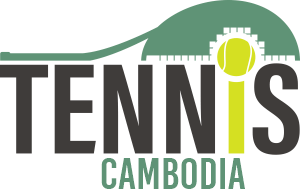Introduction to Tennis Plyometrics
Plyometric training has become an essential component of modern tennis conditioning programs, offering players a competitive edge by enhancing their explosive power, speed, and overall performance on the court. By incorporating tennis plyometrics into their training regimen, athletes can improve their ability to execute quick, powerful movements, react swiftly to the ball, and change direction efficiently.
What is Plyometric Training?
Plyometric training involves exercises that utilize the stretch-shortening cycle (SSC) to enhance explosive movements and athletic performance. The SSC is a physiological mechanism in which a muscle-tendon complex is rapidly stretched, followed by an explosive contraction. This process allows athletes to generate greater force and power output compared to isolated concentric contractions.
Plyometric exercises typically involve jumping, bounding, and hopping movements that target various planes of motion. These exercises can be adapted to suit the specific demands of tennis, focusing on the lower body, upper body, or a combination of both.
Importance of Plyometrics in Tennis
Tennis is a physically demanding sport characterized by high-intensity bursts of effort, requiring players to possess explosive power, agility, and the ability to quickly change direction. Tennis plyometrics can significantly enhance these attributes, leading to improved tennis performance.
Plyometric training helps tennis players develop:
- Explosive leg drive for powerful serves and groundstrokes
- Quick and efficient footwork for rapid court coverage
- Improved reactive strength for swift split-steps and direction changes
- Enhanced upper body power for overhead shots and volleys
By incorporating plyometric exercises into their training routines, tennis players can gain a competitive advantage and excel on the court.
Key Principles of Plyometric Training
To optimize the benefits of plyometric training and reduce the risk of injury, it is crucial to understand and apply the key principles that govern this type of exercise. These principles ensure that athletes can effectively harness the power of the stretch-shortening cycle and develop their reactive strength.
Specificity and Progressive Overload
Specificity is a fundamental principle in plyometric training, emphasizing the importance of selecting exercises that closely resemble the movements and demands of the target sport. For tennis players, this means focusing on exercises that mimic the explosive actions required on the court, such as lateral bounds, split-step jumps, and medicine ball throws.
Progressive overload is another essential aspect of effective plyometric training. Athletes should gradually increase the intensity, volume, and complexity of their exercises over time to continually challenge their bodies and promote adaptations. This can be achieved by increasing the number of sets, reps, or height of jumps, or by progressing from double-leg to single-leg exercises.
Individuality and Variety
Individuality is a crucial consideration in plyometric training, as each athlete has unique strengths, weaknesses, and training goals. Coaches and trainers should tailor plyometric programs to suit the specific needs and abilities of each player, taking into account factors such as age, fitness level, and injury history.
Incorporating variety into plyometric training is also important to prevent boredom, maintain motivation, and target different muscle groups and movement patterns. By using a diverse range of exercises and modalities, athletes can develop well-rounded explosive power and reduce the risk of overuse injuries.
Effective Plyometric Exercises for Tennis
A well-designed tennis plyometrics program should include a variety of exercises that target both the lower and upper body, as well as various movement planes. By incorporating these exercises into their tennis workout routines, players can develop the explosive power, speed, and agility necessary for optimal performance on the court.
Lower-Body Plyometric Exercises
Lower-body plyometric exercises are particularly important for tennis players, as they help develop the explosive leg drive needed for powerful serves, groundstrokes, and quick court coverage. Some effective lower-body exercises for tennis plyometrics include:
| Exercise | Description |
|---|---|
| Box Jumps | Jump onto a box or platform, focusing on explosive hip extension and soft landings. |
| Lateral Bounds | Bound side-to-side, emphasizing quick, powerful lateral movements. |
| Skater Jumps | Leap laterally from one leg to the other, simulating the movement of a speed skater. |
| Split-Step Jumps | Perform quick, small jumps, landing in a wide stance to mimic the split-step movement in tennis. |
Upper-Body Plyometric Exercises
While lower-body plyometrics are the primary focus for tennis players, upper-body plyometric exercises can also contribute to improved performance, particularly for serves, overheads, and volleys. Some effective upper-body exercises for tennis plyometrics include:
| Exercise | Description |
|---|---|
| Medicine Ball Throws | Throw a medicine ball using various techniques (chest pass, overhead, rotational) to develop upper-body power. |
| Plyometric Push-Ups | Perform explosive push-ups, focusing on quickly pushing the body off the ground. |
| Plyo Pull-Ups | Perform explosive pull-ups, aiming to pull the body up as quickly as possible. |
By incorporating a variety of lower-body and upper-body plyometric exercises into their training routines, tennis players can develop the explosive power and speed necessary for optimal performance on the court.
Implementing Plyometrics in Your Tennis Training
When integrating tennis plyometrics into your tennis workout, it is essential to follow a progressive approach that allows your body to adapt to the demands of plyometric training gradually. This approach minimizes the risk of injury and ensures that you can reap the maximum benefits from your training.
Starting with Slow SSC Exercises
Begin your plyometric training journey by focusing on slow SSC exercises, which are characterized by longer contraction times and greater force development. These exercises are particularly beneficial for actions like serving and hitting forehands in tennis, where optimal loading and force generation are crucial.
Some examples of slow SSC exercises suitable for a tennis workout include:
- Box jumps with a hold
- Broad jumps with a hold
- Single-leg squats with a jump
Perform these exercises with proper form, focusing on controlled landings and maintaining good posture throughout the movement.
Progressing to Fast SSC Exercises
As your body adapts to the demands of plyometric training, you can gradually progress to fast SSC exercises, which are characterized by shorter contraction times and a greater emphasis on quick, explosive movements. These exercises are particularly relevant for tennis players, as they simulate the rapid actions required on the court.
Some examples of fast SSC exercises suitable for a tennis workout include:
- Depth jumps
- Bounding
- Hurdle hops
- Lateral skater jumps
When performing fast SSC exercises, focus on minimizing ground contact time and maximizing the height or distance of each jump or hop.
Remember to allow sufficient recovery time between plyometric training sessions, as your body needs time to adapt and rebuild after these intense workouts. Incorporate plyometrics into your tennis workout 2-3 times per week, with at least 48 hours of rest between sessions.
Safety and Injury Prevention in Plyometric Training
While plyometric training offers numerous benefits for tennis performance, it is crucial to prioritize safety and injury prevention when incorporating these exercises into your routine. By following proper guidelines and technique, you can minimize the risk of injury and ensure that you can continue to enjoy the benefits of tennis plyometrics for years to come.
Proper Jumping and Landing Mechanics
One of the most important aspects of injury prevention in plyometric training is maintaining proper jumping and landing mechanics. When performing jumps, bounds, or hops, focus on the following:
- Land softly with bent knees to absorb the impact
- Keep your core engaged and maintain a stable spine
- Avoid excessive knee valgus (inward collapse) during landings
- Maintain balance and control throughout the movement
Proper technique not only reduces the risk of injury but also allows you to generate more power and perform the exercises more effectively.
Caution for Knee and Joint Health
Plyometric exercises can place significant stress on the knees and joints, particularly if performed with improper technique or excessive volume. To maintain knee health and joint health while engaging in plyometric training, consider the following:
- Start with a thorough warm-up to prepare your body for the demands of the workout
- Begin with lower-intensity exercises and gradually progress to more challenging variations
- Listen to your body and stop if you experience pain or discomfort
- Incorporate strength training to build a strong foundation and support your joints
- Allow adequate rest and recovery between plyometric training sessions
If you have a history of knee or joint issues, consult with a qualified sports medicine professional before incorporating plyometric exercises into your training routine.
Conclusion: Enhancing Tennis Performance with Plyometrics
Tennis plyometrics offer a powerful tool for players looking to take their tennis performance to the next level. By incorporating targeted plyometric exercises into their training routines, athletes can develop the explosive power, speed, and agility necessary for success on the court.
When implementing plyometric training, it is essential to follow a progressive approach, starting with slow SSC exercises and gradually progressing to fast SSC exercises. Prioritize proper jumping and landing mechanics, and remain cautious of knee and joint health to minimize the risk of injury.
By embracing the principles of specificity, progressive overload, individuality, and variety, tennis players can design effective plyometric training programs that cater to their unique needs and goals. With dedication, consistency, and a focus on safety, athletes can harness the power of tennis plyometrics to enhance their performance and reach new heights in their tennis careers.






